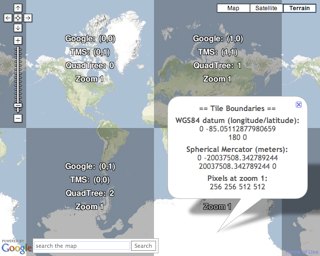How should the search interface produced by our project look like ?
Let's have a look first at existing implementations of such search...
One of the best map search interfaces is now definitively the
Google Maps interface. Clean, straightforward, user-friendly and not over-complicated. This will surely be the first inspiration for our work.
But we need more than a text search, in fact we need "Where, When, What and Who" search approach analogous to
Electronic Culture Atlas Initiative (ECAI):

Other inspiring interfaces were developed by
Alexandria Digital Library (look at their
WebClient) and by
DigMap.eu (look at their
Portal) and other
related projects.
Some time a go we used (
open source)
TimeMap.net system for similar kind of search on a small collection in the Moravian Library in Brno (you can search subset of Old Map and Manuscript collection on the map and filter results by time and fulltext query at
http://timemap.mzk.cz/).
Unfortunately the TimeMap project is not able to handle any larger number of documents as all the data are loaded into a client-side based Java Applet.
Therefore, we are looking for usable building blocks for a new search interface, which should be strictly web-based (JavaScript, AJAX) and which will allow us to use powerful spatial search algorithms on the server side (we will write about them later).
For a map query window we would like use maps data published by Google, Microsoft, Yahoo or OpenStreetMap. That should be relatively easy as all of these are supported by an open-source
OpenLayers project.
Second component of the search interface is a web-based timeline widget, similar to the one implemented in
Google Labs Experimental Timeline View:

We did a research into
projects implementing Timeline for selecting a time range or date range and summarized the result list on our Wiki.
If the publishing format of digitized maps and an existing georeference data allow us to overlay maps we will implement an interface similar to MapSynthesizer - a scalable prototype user interface for browsing, searching, and information discovery. MapSynthesizer has been developed by Microsoft Research and published online as open-source. Unfortunately, its source code is almost unusable and we would like to base this kind of interface on OpenLayers anyway, rather than on one specific map API (Virtual Earth in this case).
Anyway, you can have a look at this really nice vision of a future user interface for online map libraries:
More
info about MapSynthesizer including source code, live prototype (IE only) and a
PDF article about this project is available online.
In case you have anything to say about your expectations from search interface, or feel that some project is missing on the linked lists... don't hesitate and write a comment to this blog post!






